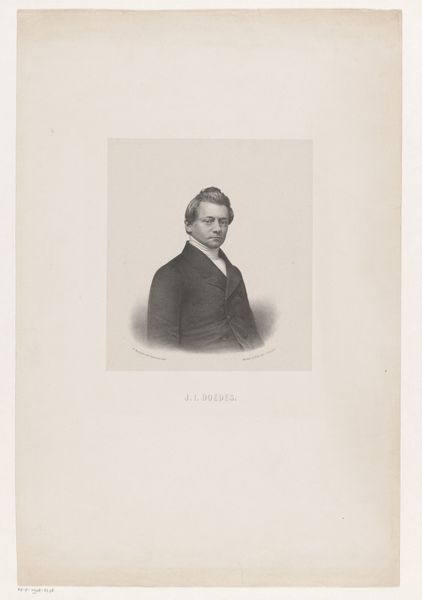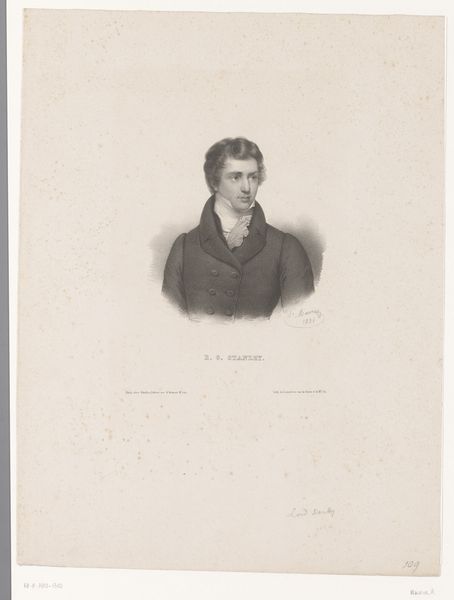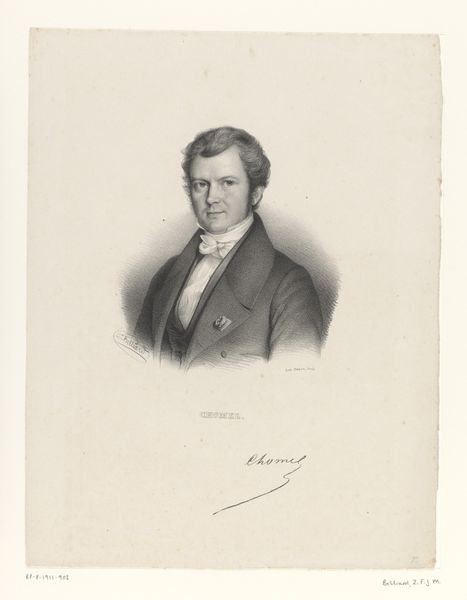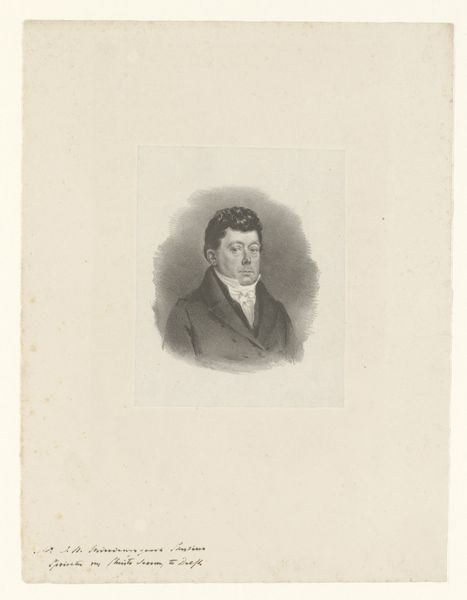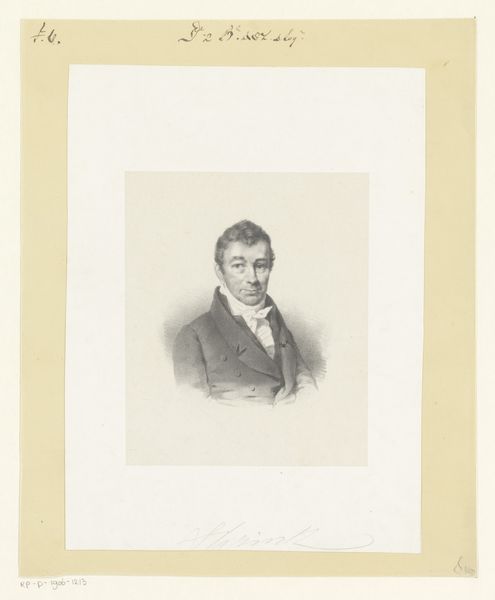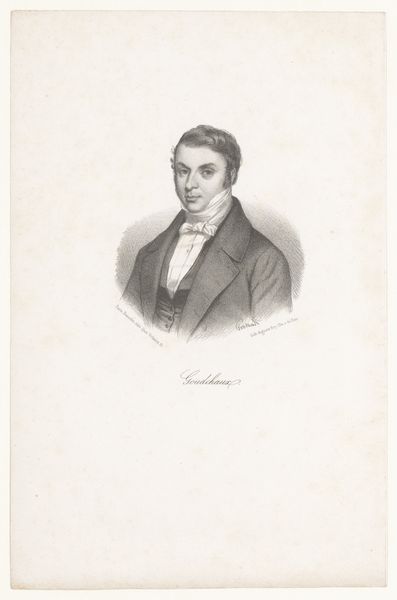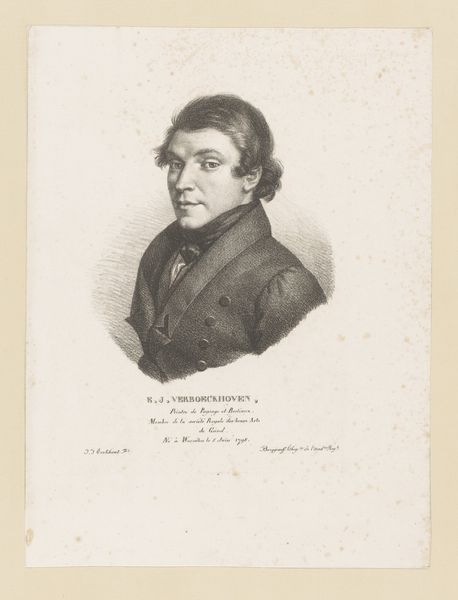
print, engraving
#
portrait
#
pencil drawn
#
neoclacissism
# print
#
old engraving style
#
pencil drawing
#
engraving
Dimensions: height 314 mm, width 244 mm
Copyright: Rijks Museum: Open Domain
Curator: Welcome. Here we have Jules Hébert’s “Portret van Alexandre Vinet,” created in 1846. It's an engraving, a print made during the Neoclassical movement. What’s your first reaction to this piece? Editor: Austere, yet intimate. The precision of the engraving lends a formal quality, but the gaze of the subject is very direct, creating a feeling of immediacy. Curator: Precisely. Note the strong, clear lines defining Vinet's face, juxtaposed against the softer rendering of his clothing. Hébert’s technique skillfully uses contrast to emphasize Vinet’s intellectual presence. The details really draw your eye into his face. Editor: I’m intrigued by Vinet himself. Alexandre Vinet was a Swiss theologian and literary critic. Placing this portrait in the context of the religious and intellectual debates of the 19th century reveals a statement about the importance of thinkers like Vinet. How might the artwork itself play into representing him at the time? Curator: It elevates him. The print’s linear precision and balanced composition speak to Neoclassical ideals of order and reason. This positions Vinet as an embodiment of enlightenment thinking. Also consider how printmaking democratized access to imagery, making portraits like these significant for disseminating influence and ideas. Editor: I agree. And by presenting him within this established visual language, Hébert amplifies Vinet’s impact beyond religious circles into a wider intellectual sphere. He wasn’t just a theologian. He was helping to shape how we understood culture at the time. Curator: Indeed, the interplay of light and shadow emphasizes not just his features, but a certain intensity. Consider also how his eyeglasses reflect a scholarly focus, creating a lens – both literally and figuratively – through which we perceive his intellectual depth. Editor: The image offers a sense of history, connecting 19th-century thought to current discourse. We, today, grapple with how individual identities contribute to shifting intellectual and social structures. Hébert and Vinet spark our current conversations. Curator: Well observed. I've found a newfound appreciation, too. Editor: Me as well!
Comments
No comments
Be the first to comment and join the conversation on the ultimate creative platform.
